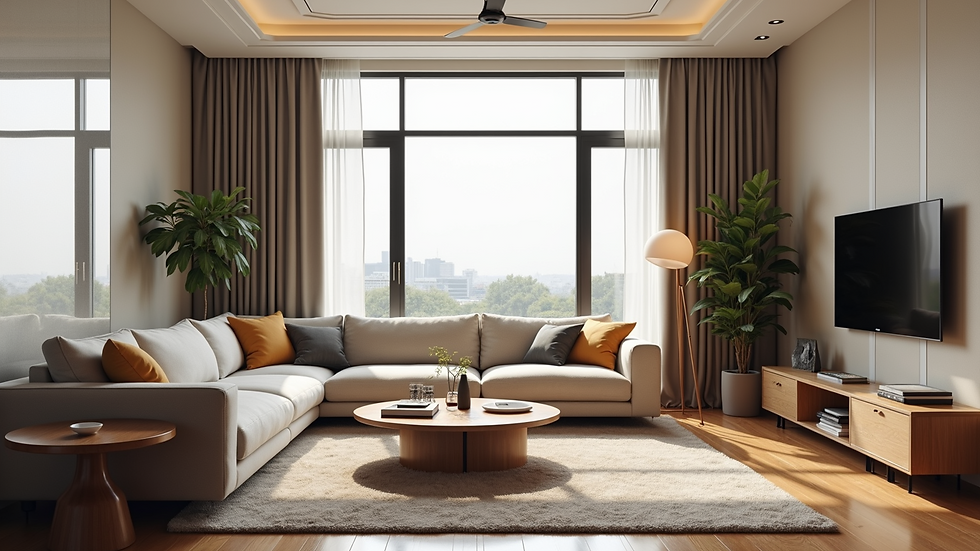The Benefits of Regular Maintenance for Your Furniture
- Joshua Brett
- May 12
- 4 min read
Furniture can often be one of the largest investments in your home. Whether it’s your cherished dining table, a cozy sofa, or an elegant armchair, maintaining their condition is crucial for both aesthetic and functional reasons. Regular maintenance not only extends the lifespan of your furniture, but it also enhances its beauty and keeps your home looking fresh and welcoming.
Maintaining your furniture may seem like a hassle at times, but the benefits are immense. From saving money on replacements to ensuring your living space remains stylish, regular upkeep is worth every minute. Here, we explore the key advantages of committing to a furniture maintenance routine.
Understanding Furniture Maintenance
Furniture maintenance refers to the processes involved in cleaning, repairing, and preserving your furniture. It encompasses everything from routine dusting and polishing to more comprehensive tasks like reupholstering or refinishing surfaces. Regular maintenance can prevent wear and tear, helping your pieces retain their original charm and functionality.
Moreover, certain maintenance tasks can even enhance the durability of your furniture. For instance, applying a protective finish can prevent scratches and stains, while regular dusting can keep dirt from settling into porous surfaces. Understanding these aspects of furniture maintenance can make it easier to implement a comprehensive care routine.

The Cost Savings of Regular Maintenance
One of the most compelling reasons for maintaining your furniture is the cost savings it provides. According to the American Home Furnishings Alliance, the average consumer spends around $2,000 on furniture every year. Regular maintenance can significantly reduce the need for expensive replacements or repairs, enabling you to protect your investment.
For example, addressing minor scratches and dents early on can save you money in the long run. If left untreated, these small issues can worsen over time, leading to costlier solutions like complete refinishing or, in some cases, needing entirely new furniture. Investing in routine maintenance means keeping your furniture looking new without breaking the bank.

What is the difference between furniture restoration and refinishing?
Understanding how to care for your furniture often involves knowing the difference between restoration and refinishing. While both processes aim to revive and enhance your furniture, they are distinctly different.
Furniture Restoration typically involves repairing, polishing, and cleaning the piece so that it retains its original aesthetic appeal. Restoration plans can include replacing hardware, fixing broken legs, or reupholstering. This method is often more labor-intensive and focuses on preserving as much of the original material as possible.
Furniture Refinishing, on the other hand, involves completely stripping a piece of its old finish and applying new stain or paint. This process is suitable for pieces that have suffered extensive wear. Refinishing allows for a brand-new look but can obscure some of the original character of the furniture.
Both restoration and refinishing can be beneficial, depending on the furniture's condition and your preferences. Knowing when to use each method is key in maintaining the integrity of your pieces.
Enhancing Aesthetics and Comfort
Another benefit of regular furniture maintenance is the enhancement of aesthetics and comfort. Clean and well-maintained furniture not only contributes to the ambiance of your home but can also improve your overall comfort.
A dusty or poorly kept sofa can trap allergens, making your space less inviting. Regular cleaning and upkeep ensure that your furniture remains visually appealing and comfortable to use. For example, washing your fabric coverings or polishing wooden surfaces can instantly uplift a room’s look.
Implementing a maintenance schedule can make this task easier. For instance, consider scheduling a monthly cleaning day where you dust, vacuum, and polish your furniture.

Creating a Healthy Living Environment
Maintaining your furniture contributes to creating a healthy living environment. Dust, allergens, and bacteria can accumulate on surfaces, leading to health issues or discomfort. Regularly dusting and cleaning your furniture helps mitigate this concern.
Utilizing appropriate cleaning solutions and techniques can further improve this environment. For example, a damp microfiber cloth can effectively trap dust without damaging your furniture. Furthermore, you can use non-toxic cleaning solutions to avoid harmful chemicals in your living space.
Another excellent maintenance practice is to condition leather furniture regularly. Conditioning helps keep the material supple and prevents cracking and peeling. This process adds a layer of protection that is crucial for the longevity of leather pieces.
Final Thoughts on the Value of Regular Maintenance
Regular maintenance is not just beneficial; it's essential for preserving the beauty and functionality of your furniture. By dedicating time and effort to maintaining your furniture, you can save money, enhance aesthetics, and create a healthier living environment.
Implementing routine tasks like dusting, cleaning, and periodic repairs can make a significant difference. For those looking for more thorough assistance, consider exploring furniture maintenance services. These services can lift the burden off your shoulders, ensuring your furniture remains in excellent condition.
Through proper care and attention, your furniture can continue to add value to your home for years to come. Remember, investing in maintenance is investing in the overall quality of your living space.






Comments